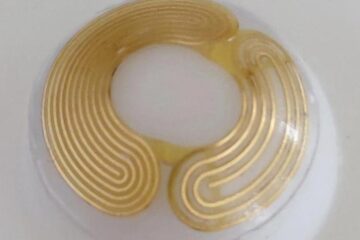Personalised doses of insulin

Diabetes is a widespread illness affecting 5 per cent of the population. In diabetics the metabolism produces an excess of glucose in the blood and, as a result, a number of sufferers need doses of insulin which allows them to regulate their glucose levels.
Currently, the method of administering insulin to diabetic patients making use of emergency services for insulin dosage depends on the experience of the qualified personnel. That is, the same patient can receive different insulin doses, and in different ways, according to the doctor attending her or him.
In order to improve this system of administration, Doctor Tomás Rubio proposed in his doctoral thesis the development of a mathematical model which would facilitate predicting the exact amount of insulin needed by a patient at any time. The thesis showed that both the absorption constant (the time taken for the insulin to enter the blood and become effective) as well as the elimination constant (the time taken for the insulin to disappear), is different for each patient. Moreover, for any one patient this absorption constant varies with time.
Given this, Doctor Tomás Rubio proposed using a technique based in blood extractions. He concluded that, by taking samples at two different times, the level of glycemia can be measured and the constants of absorption and elimination can be calculated. Knowing these constants, the exact amount of insulin needed by the patient can be calculated. Nevertheless, if the patient suffers another decompensation crisis, it will be necessary to recalculate these constants.
Apart from its use in emergency services, this model has applications for self-medication by the patient at home. For example, it can be used with the insulin perfusion pumps currently used to apply a quantity of insulin, depending on the glucose level. It can also be used with patients undergoing surgery in order to know how much insulin has to be administered during the operation and to control the amount of glucose administered via serum.
Two types of patients
Two types of patients are distinguished in this study. The first corresponds to insulin-dependant diabetic patients, normally young people, who require insulin for their treatment and whose acute condition is usually diabetic ketoacidosis. The second type corresponds to patients who have very high levels of glycemia, usually older and overweight people, who are normally regulated through orally administered antidiabetic medication, although many of these also end up needing insulin. These patients show acute conditions of hyperosmolar coma and symptomatic hyperglycemia.
The research was carried out on patients with the different acute conditions: diabetic ketoacidosis, hyperosmolar coma and symptomatic hyperglycemia. From the analysis of the results it was concluded that, for the construction of the mathematical model, the measuring of glycemia and insulin were necessary
Contact :
Iñaki Casado Redin
Nafarroako Unibertsitate Publikoa
inaki.casado@unavarra.es
(+34) 948 16 97 82
Media Contact
More Information:
http://www.unavarra.esAll latest news from the category: Health and Medicine
This subject area encompasses research and studies in the field of human medicine.
Among the wide-ranging list of topics covered here are anesthesiology, anatomy, surgery, human genetics, hygiene and environmental medicine, internal medicine, neurology, pharmacology, physiology, urology and dental medicine.
Newest articles

‘Smart’ contact lenses could someday enable wireless glaucoma detection
Most people with early-stage glaucoma don’t know they have it, even though early treatment is key to reducing vision loss. While detecting a subtle increase in eye pressure helps doctors…

New tech may lead to smaller, more powerful wireless devices
Good vibrations… What if your earbuds could do everything your smartphone can do already, except better? What sounds a bit like science fiction may actually not be so far off….

Caution, hot surface!
An international research team from the University of Jena and the Helmholtz Institute Jena are demystifying the mechanisms by which high-intensity laser pulses produce plasma on the surface of solids….





















